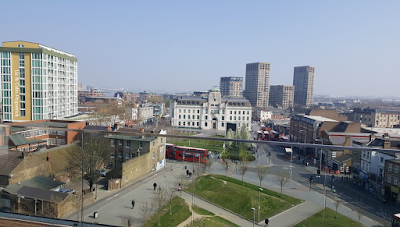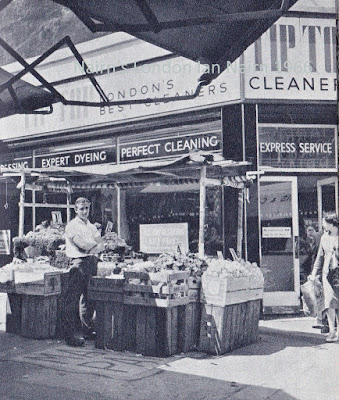In 2013, as part of its 100th anniversary, Lakeland College, located in Vermilion, Alberta, held a special remembrance celebration for the women of the CWAC.
During the war, the military took over the college and transformed it into the western Canadian training centre. As part of that celebration, I spoke on behalf of the families of those women who served in the Corps. It is my pleasure to share those thoughts with you. It is really the story of my mother, but could also be the story of so many others.
I am the proud daughter of a woman who absolutely loved being a member of the Canadian Women’s Army Corps. Like most of those who volunteered for service, Lieutenant Jessie Wright McKellar was from small town Canada. Located on the Lake of the Woods in northwestern Ontario, Keewatin had a population of no more than 3,000. A close-knit community, most residents were the first and second generations of Scottish and English immigrants.
When war broke out, Jessie saw her brothers and all of her male cousins and friends sign up. She said she felt left out so she moved to Fort William, Ontario, present day Thunder Bay, and worked as a riveter with the Canada Car Company making Liberator bomber planes. But, when the Corps began advertising, mom jumped at the chance to do something she thought would be special, adventurous and more meaningful! She joined the CWAC's at the age of 21 and never once regretted the decision.
Mom quickly became an officer and did her advanced officer`s training in Ste. Anne de Bellevue, Quebec, but was also posted to, or did specialized training, in Perth, Ontario; Medicine Hat, Alberta; Winnipeg, Manitoba; and, Camp Shilo, just outside of Brandon, Manitoba. Although she was never posted to Vermilion, she met women who did their training there; and, in the early 1990’s, she made contact with two of them. Together, they recalled an experience that only they could share and understand. This meant a lot to mom.
Now, from a very early age, my brother, my two sisters and I knew that we had a mother who was somewhat different from the mothers of our friends!
•
None of those mothers had a pair of military-issued, clunky heeled, reddish brown shoes that laced up the front; or had a bag in her closet, scattered with moth balls, that contained a khaki uniform complete with matching shirt, tie and cap.
•
No one else’s mom learned how to parachute by being strapped in a chair on the top of a tower and freefalling to the ground.
•
Only our mom could tell us about being on parade and leading her platoon down the wrong street, entirely missing the saluting party! Mom did that only once!
•
And none of those other moms could drive a jeep, change the oil in a car, or knew how to replace that broken fan belt with a brown Lisle cotton stocking. Well our mom could!
•
We also thought it was pretty cool that mom could play reveille and taps on the bugle. And, no - that’s not how she woke us in the morning or put us to bed at night! In fact, she read us fairy tales and sang typical children’s songs. It fell to our dad to teach us war songs. To my dad’s credit, it was only many years later that I learned there were other, more risque versions of those little ditties!
•
I also remember mom telling us about having her IQ tested. She said she was pretty naïve about IQ’s, and was quite surprised when the testers came back into the room and said they were going to test her again. “They were pretty excited”, my mom said. “They told me my IQ was 162 and they thought they had a genius on their hands. But, when they re-tested me, my score was only 142. I wasn't as smart, after all. Anyway, I guess they thought I was still worth something, so, they sent me off to become an Officer!”
•
What really excited mom, though, was her aptitude test. It said she would make an excellent plumber! “This made sense to me”, mom told me. “I always loved tinkering with things and taking things apart.” Well, she was certainly right about that! A few years ago, when we were cleaning out our parents` house, we found all sorts of record players, radios, lamps and small kitchen appliances that she had taken apart…and never put back together! And as for that dripping faucet in the bathtub…the current owner says it still drips
•
Finally, one of my favourite stories was before mom became an officer. She was working as the secretary for the Major in charge of administration. Instead of getting my mother’s attention using a bell, like all the other officers used, he would pick up a hammer and bang it against two artillery shells – presumably empty!
•
What the heck - one last story. I may as well tell you that mom even got her one and only set of false teeth while she was in the Corps. These teeth created a story unto themselves. Mom could chew bubble gum; slice through an apple - skin and all; rip apart plastic; demolish a steak; and cut through embroidery floss –count them- 6 strands of thread! Those teeth were amazing and they lasted over 50 years! At one time, I thought they would have been an interesting curiosity in the Canadian War Museum. In retrospect, though, it seems clear to me that, whoever made mom’s false teeth all those years ago, had the secret to making the first weapon of mass destruction!

Yes, our mom was quite different from those other moms-and we loved her for it! The four of us always knew there was something special and respectful about having had a mother who served in the War as a member of the CWAC’s. To this day, I have a picture of mom, in her uniform, in my living room; and my brother posts photos of mom and dad every November on his Facebook page … lest we forget.
Mom’s memories were vivid throughout her life and she spoke of being in service with pride, fondness and humour. “At a time when many women weren’t even working, I was doing all sorts of things most women never got to do,” she told me. She also said that women in the Corps did experience life in an exciting and unusual way: she met people from across the country; she got to travel; she learned and did things she would never have known or done otherwise; and she learned, and continued to believe, that women were capable of doing just about anything. This was but one of the legacies mom passed on to my two sisters and me.
Mom has been gone since 1995; but I am very privileged to be able to honour and express my deepest thanks to her - and to the members of the Canadian Women’s Army Corps - for the service they gave and the paths they opened for their daughters and future generations of women in Canada, within our society, our industries and our police and military presence. They were trailblazers - and they are unique in the history of this country. “Dulcit Amor Patrice.” In Love of Country, We Serve.
© Susan (Hillman) Brazeau
Photos
of Jessie Wright McKellar are from the Author's Family Collection

















































